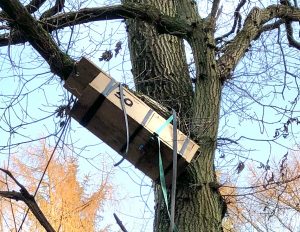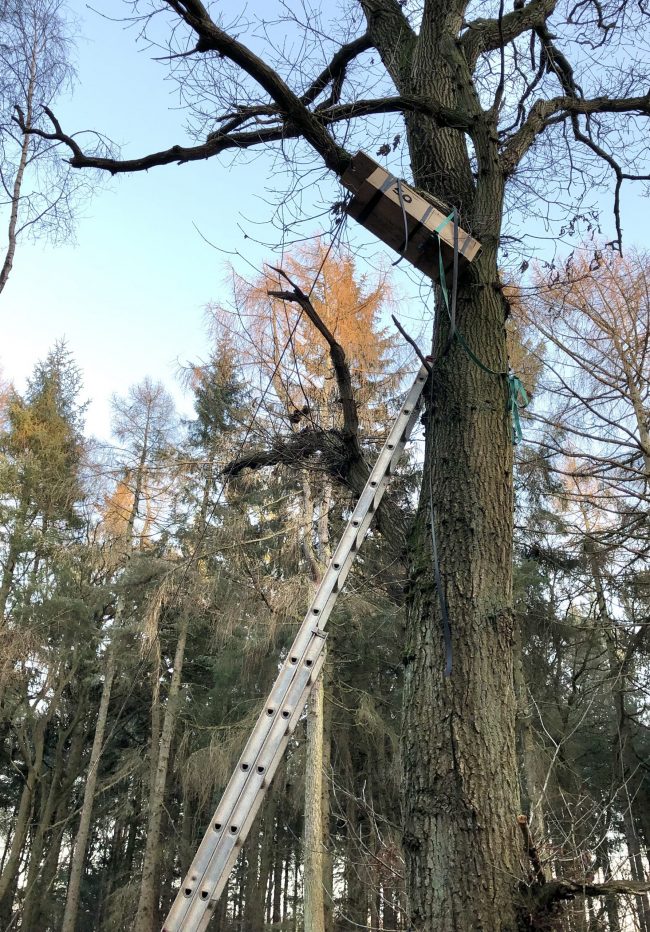Home to roost : an owl box.

In late winter, it’s good to put up new nest boxes and clear out existing ones, in time for the breeding season. In Ellekers Wood, as part of our management plan, we've been making lots of new boxes for birds and bats. Bats are currently having problems finding food to eat, plus many of their natural roosting places have disappeared. Building a bat box offers them :-
- somewhere safe to roost,
- a place to raise their pups and
- Sleeping quarters during the day.
Our biggest boxes are the two tawny owl ‘chimney boxes’. Tawny (or brown) owls (Strix aluco) ‘own’ the classic owl hoot. They will nest in large gardens with trees, but woodlands are good for them. Their diet ranges from worms to rabbits. Tawny owls like a north east facing entrance, with a clear route.
Our boxes are made from 1" thick, rough sawn larch planks. We followed the RSPB design. Each box is approximately 800mm long (measurements / specifications available here). Fortunately, Dan has a head for heights and he has installed the boxes in mature oak trees at a height of approximately 6 metres.

The tawny owl typically makes its nest in a tree hole where it can protect its eggs and young against potential predators. They will occupy / nest in smaller cavities than barn owls and the design of the box reflects this. As tawny owl chicks start to explore their surroundings before fledging, it is important that the boxes are placed with easy access to nearby branches, so that they can climb over. As with many species of birds, tawny owls are sensitive to disturbance when incubating their eggs, and should not be approached as they can be aggressive. It is important that consideration is given to the siting of any box
Full details of RSPB nest boxes for various birds can be found here :
Comments are closed for this post.

Great Advice.
Kind Regards
Ben
Ben Randall
8 March, 2022